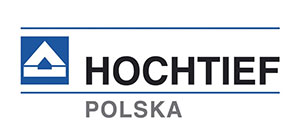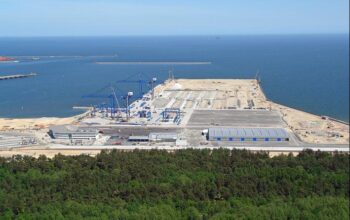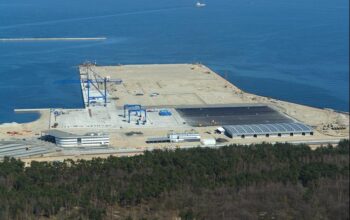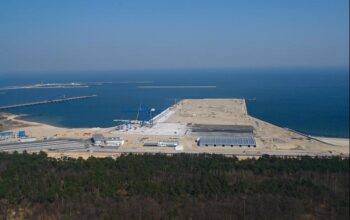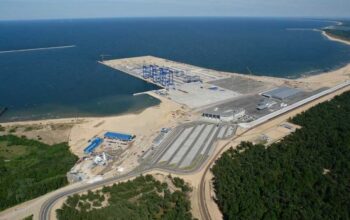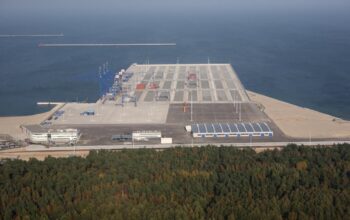Gdansk
Time of construction: 10.2005-10.2007
Area: 44 ha
Contractor: consortium of HOCHTIEF Construction, HOCHTIEF Polska
Investor: Deepwater Container Gdansk S.A.
Characterisation: HOCHTIEF Polska was a partner in the consortium HOCHTIEF Construction AG Infrastructure Polska Sp. j., and DCT Gdansk S.A. for the construction of the Deep-sea Container Terminal Gdansk (DCT) in the Northern Port in Gdansk, Poland. The partners in the consortium were HOCHTIEF Construction AG Civil Engineering and Marine Works (the worldwide renowned competence centre for Marine Construction of HOCHTIEF) and HOCHTIEF Polska.
The design of DCT can be considered unique not only due to its area and the number of personnel employed on its construction but also due to the special nature of the land on which the terminal was built.
The terminal was built on an artificially formed solid pier measuring 800 m in length beyond the existing coastline and 315 m in width. DCT has the area of 44 ha, which made it the largest construction site HOCHTIEF Polska has ever operated on. Two container reloading stations were built: – the first section of the quay is 385 m long and the water depth at it is 16,5 m – the other section is 265 m long and has 13,5 m water depth. This section is additionally ended with a ramp for Ro-Ro ship handling.
Consequently, the terminal is able to receive Panamax vessels – the largest type of ships that enter the Baltic Sea. The construction of DCT required cooperation of a large group of experienced partners, including the largest Polish hydroengineering companies and local subcontractors and suppliers, as well as Dutch and German companies using specialized equipment and possessing the indispensable expertise. At the peak of the working schedule there were over 400 staff working on the project.
The construction works involved moving approx. 5 million cubic metres of sea bottom soil and constructing approx. 2 km of steel watertight walls. It was the first case of use of high corrosion resistance steel beams of such enormous size in Poland. The project included the construction of transport routes and a railway line, each 2 km in length.
Award:
– “Platinum Drill” in the Engineery objects category of the 12th edition of the “Platinum Drill” competition organized by Robert Bosch (2007)
